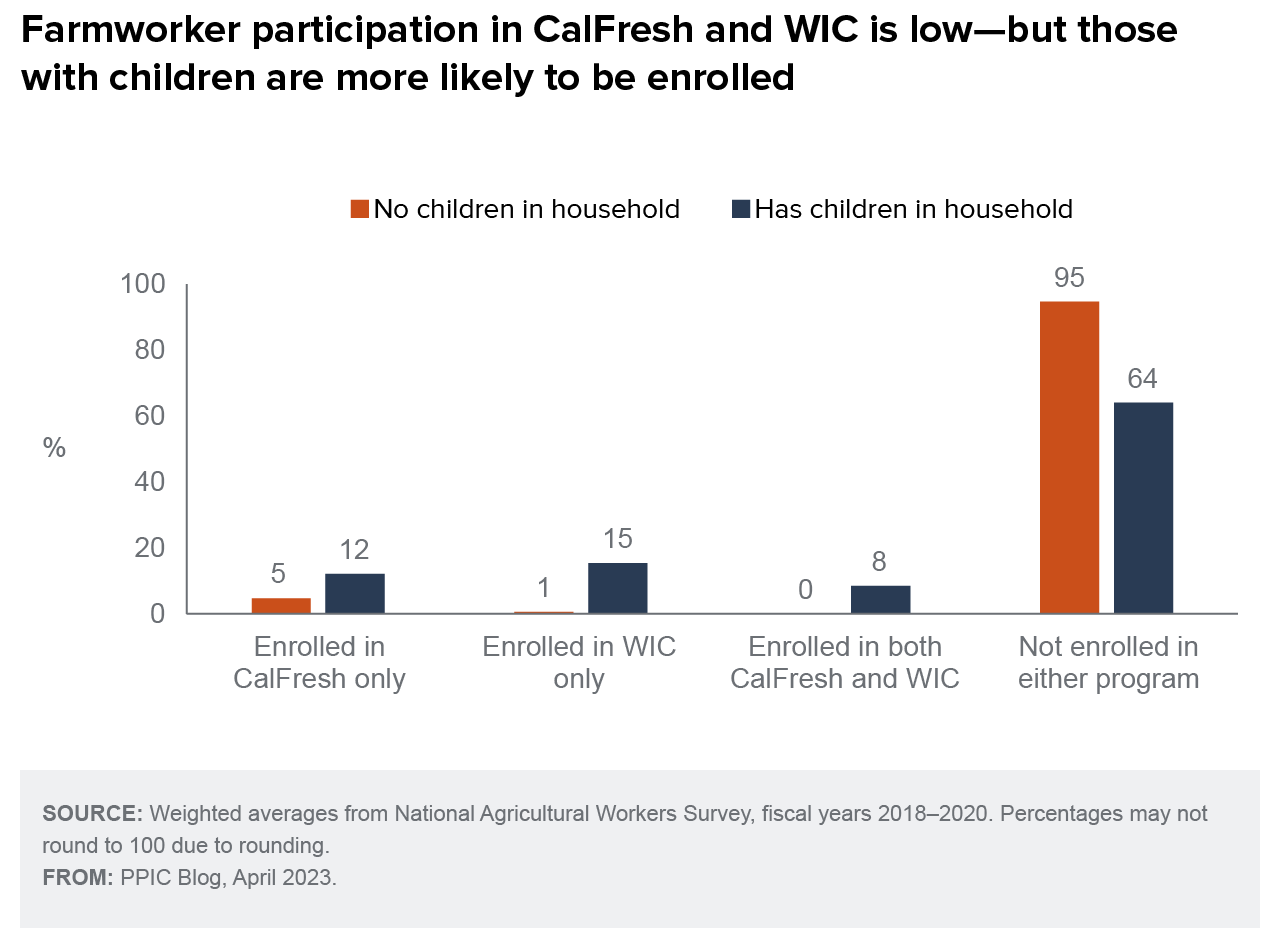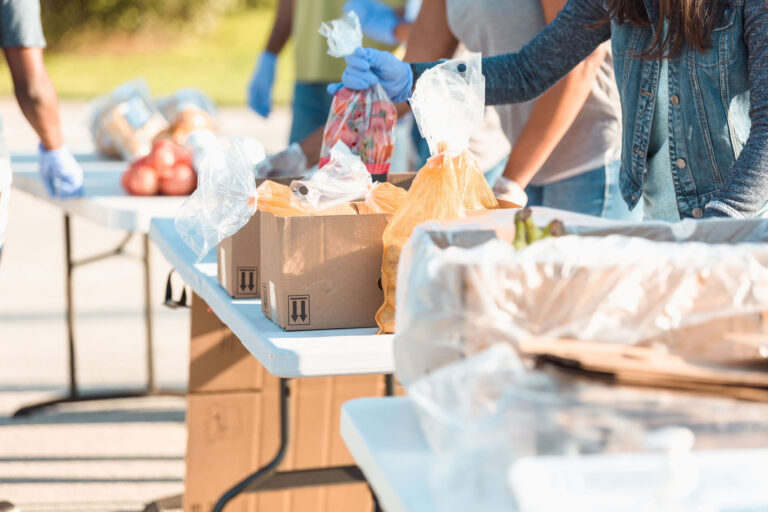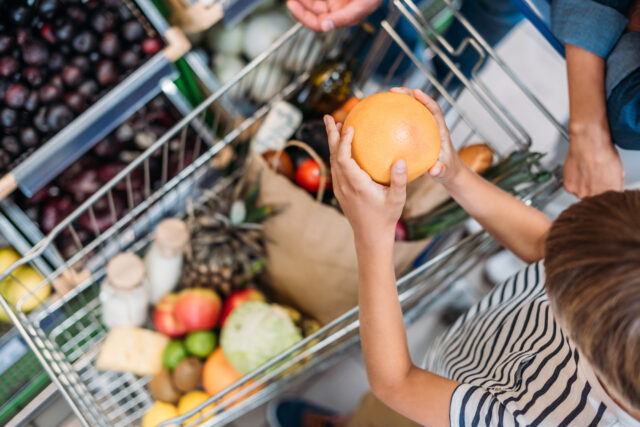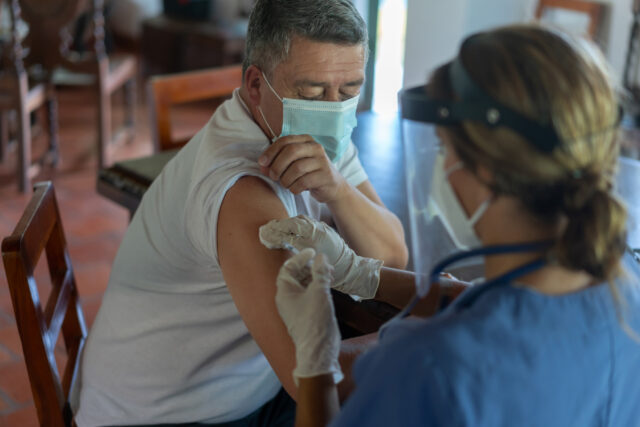Farmworkers play a key role in state and federal food supply chains, but are vulnerable to food insecurity because of their low incomes, unstable work, and immigration status. In recent decades, farmworkers have become more likely to live in the US year-round with spouses and children. Since children are especially susceptible to the negative health consequences of food insecurity, their presence elevates the importance of identifying and alleviating hunger in farmworker families.
Farmworkers have access to a patchwork of assistance programs and community resources such as food banks for many, this patchwork does not include all of the nutritional assistance programs that help reduce poverty across the state. Many farmworkers—about 90% of whom are immigrants—are not eligible for CalFresh (California’s version of SNAP), which provides debit cards for buying food. The California Food Assistance Program (CFAP) provides equivalent benefits for documented immigrants who do not meet CalFresh’s requirement of five years of permanent residency or US citizenship. Unlike CalFresh/CFAP, the Special Supplemental Nutrition Program for Women, Infants, and Children (WIC) does not tie eligibility to immigration status. But WIC is a more limited nutrition program, serving pregnant or postpartum individuals, infants, and children under the age of 5.
Most farmworkers do not participate in either CalFresh or WIC, though participation rates are higher among those with children. Farmworkers’ school-aged children can access universally free meals through the National School Lunch Program and School Breakfast Program, neither of which check immigration status. Families with children may also be receiving assistance through Pandemic-EBT, a temporary program designed to make up for a loss of access to school meals during the pandemic through a series of one-time payments.

Pandemic-EBT will end after the 2022–23 school year, and other pandemic-era expansions to the nutritional safety net are also being phased out at a difficult time for farmworkers, who are struggling to pay for food and other basic needs in the wake of recent extreme weather events. For example, farmworkers who do participate in CalFresh received additional funds during the pandemic, but this supplemental support ended in late March 2023.
Food insecurity is tied to many complex issues—including the high and rising cost of living in California—and it is difficult to pinpoint rates of food insecurity among farmworkers. However, one recent policy change has the potential to expand access to nutritional assistance among older farmworkers: CFAP, which currently serves only documented immigrants, will extend coverage to low-income undocumented adults ages 55 and older in 2027. About 8% of undocumented farmworkers are in this age group. This policy shift suggests that although California cannot control macroeconomic conditions, natural disasters, or federal immigration policy, state-led improvements to the nutritional safety net can make food more accessible for the workers who plant, tend, and harvest California’s crops.





